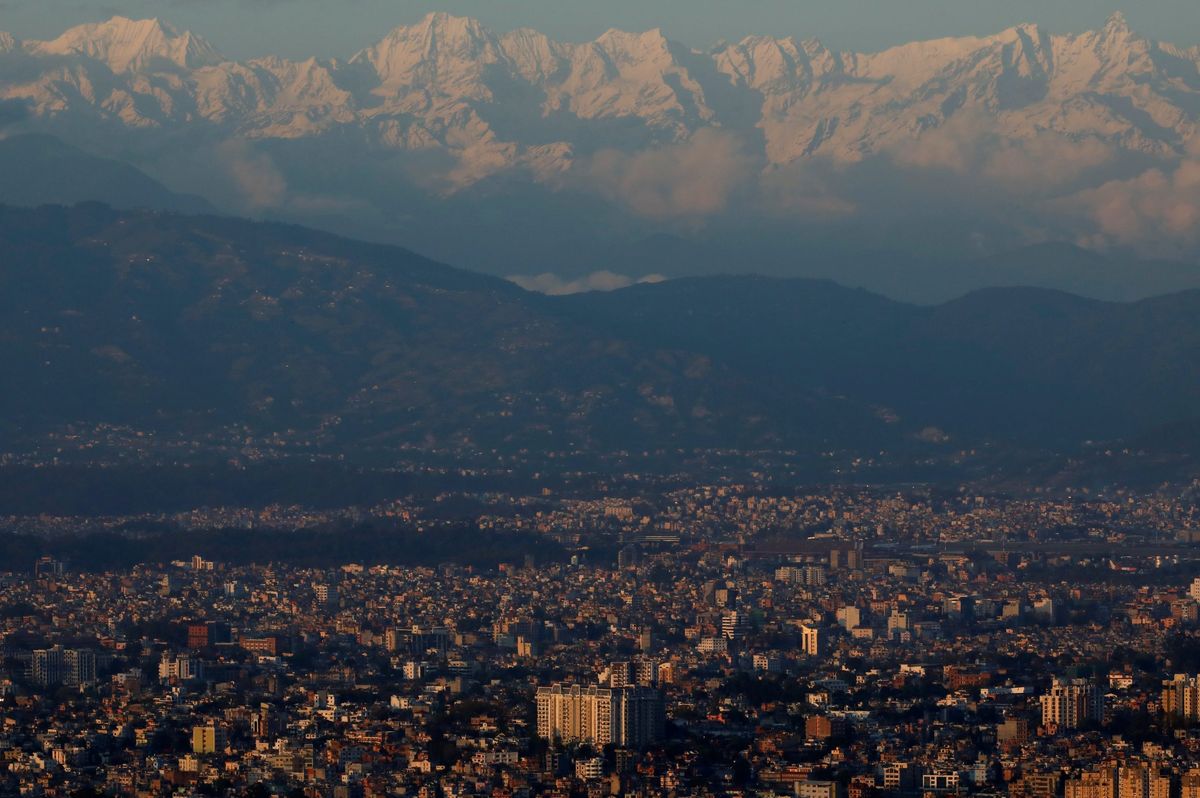How worried should we be about the air pollution shortening people’s lives in North India by nearly a decade?

A few minutes every morning is all you need.
Stay up to date on the world's Headlines and Human Stories. It's fun, it's factual, it's fluff-free.
The reality is though, 91% of countries are failing to meet the WHO standards for air quality, which is measured by the Air Quality Index, or AQI.
How much pollution is actually there?
- Recently, the University Policy Institute at the University of Chicago said that air pollution in India is much higher than the World Health Organization (WHO) guidelines
- In fact, it’s so much higher that the air is shortening people’s lives by up to 10 years in the affected areas.
- The reality is though, 91% of countries are failing to meet the WHO standards for air quality, which is measured by the Air Quality Index, or AQI.
- AQI is a standard used to compare different locations for air quality. It uses a scale from perfectly clean, at 0, to extremely hazardous, at 500.
- Last year, India’s AQI was an average of 141 and ranked 3rd with the most polluted air. China ranked 14th at 98 and the United States ranked 84th with an average index of 40. Air pollution in Hong Kong comes in at 60, with its highest AQI hitting 45 in Causeway Bay.
- A score anywhere from 0 to 50 doesn’t pose a health risk. But, from 50 onward, there is enough pollution in the air to put people at risk, even normally healthy people.
What else did the report say?
- The report showed that aside from India, South Asia is home to the three other most polluted countries in the world, including Bangladesh, Nepal and Pakistan.
- The report also added that because this region is so populated and pollution is concentrated in these densely populated areas, the region accounts for 58% of total life years lost.
- The report also revealed that if these areas are able to reduce their pollution levels to meet the WHO’s standards, the average person would live 5.6 years longer.
Where did all this pollution come from?
- There are different kinds of pollution that the WHO keeps track of, but the most damaging is called PM2.5, meaning particulate matter less than 2.5 millionths of a centimeter across.
- Essentially PM2.5 is made up of tiny particles of soot, dust and other chemicals that float into the air and get into our lungs. This particulate matter comes from burning any sort of fuel – from cooking to driving to manufacturing.
- Particulate matter is also a large concern of forest fires. Recent fires in California are causing the AQI to jump up to 467.
- Other types of pollution include bigger particulate matter, ozone, sulfur dioxide and nitrogen dioxide, and all of these come from burning petroleum, wood and other types of fuels.
- Because this pollution comes mainly from “dirty” fuels, many of the worst polluted places are low and middle-income countries.
- According to the WHO, 91% of pollution-caused premature deaths were located in these countries, specifically in Southeast Asia and the Western Pacific.
Why should you care?
- When you breathe in particulate matter, you’re literally breathing in tiny specs of material.
- If it’s small enough, it gets into your lungs and can cause breathing problems. Recent evidence has even shown that PM2.5 can sometimes cross the lungs and spread into the bloodstream.
- In the short-term, high air pollution can damage cells in your lungs and airway making it harder for you to breath and causing coughing fits, wheezing and chest pains.
- Short term exposure can also make your heart and lungs work harder, adding unneeded stress and making everyday functions more difficult.
- Constant exposure to things like dust and soot cause lung tissue to age faster. Eventually this leads to decreased function and lung capacity, and can actually cause things like asthma and pneumonia.
- Living in high pollution has even been linked to different kinds of cancer. And, just like what’s happening in India, severe pollution can seriously shorten a healthy person’s life span.
What can we do about it?
- “More than ever before, the world urgently needs strong policies to reduce its dependence on fossil fuels,” read the University Policy Institute at the University of Chicago study, adding that change was indeed possible.
- The study used China’s progress, which decreased PM2.5 levels by nearly 30% in the country under five years, as a reference.
- “Since 2013, particulate pollution in China has declined by 29 percent, adding about 1.5 years onto average life expectancy assuming these reductions are sustained," read the report.
- In March of 2021, the US Environmental Protection Agency (EPA) finished the Cross-State Air Pollution Rule in order to cut factory emissions of nitrogen oxides, which cut down on smog that spreads from factories in 12 eastern states.
- The European Commission has announced that they intend to reduce pollution-related deaths by 55% before 2030.
- “Collective action to reduce carbon emissions is absolutely necessary. But collective action can’t possibly happen if individuals throw up their hands and decide not to pitch in,” said Associate director of UCLA’s Center for Climate Science, Katherine Reich, M.A., said in an interview with Bustle.
You drive the stories at TMS. DM us which headline you want us to explain, or email us at tips@themilsource.com




Comments ()